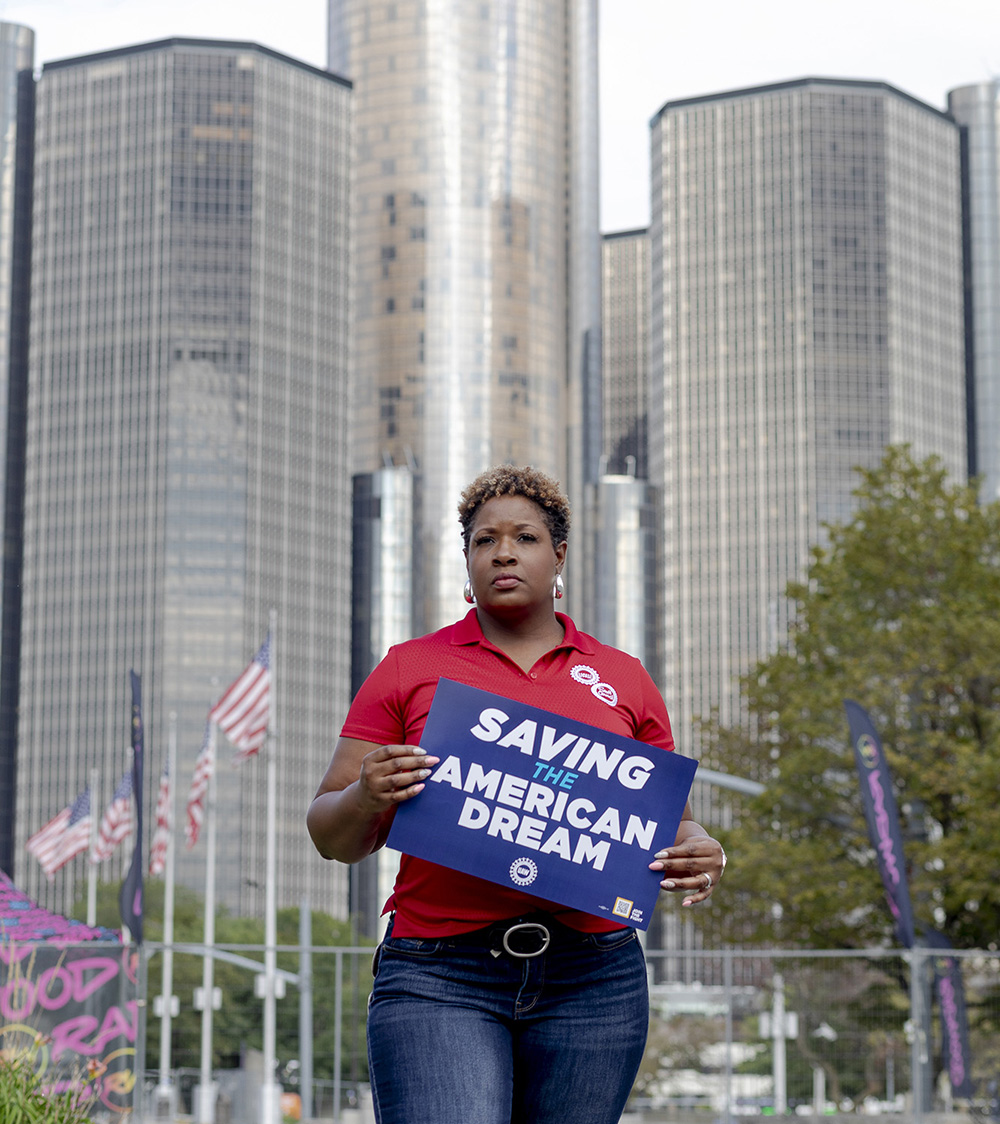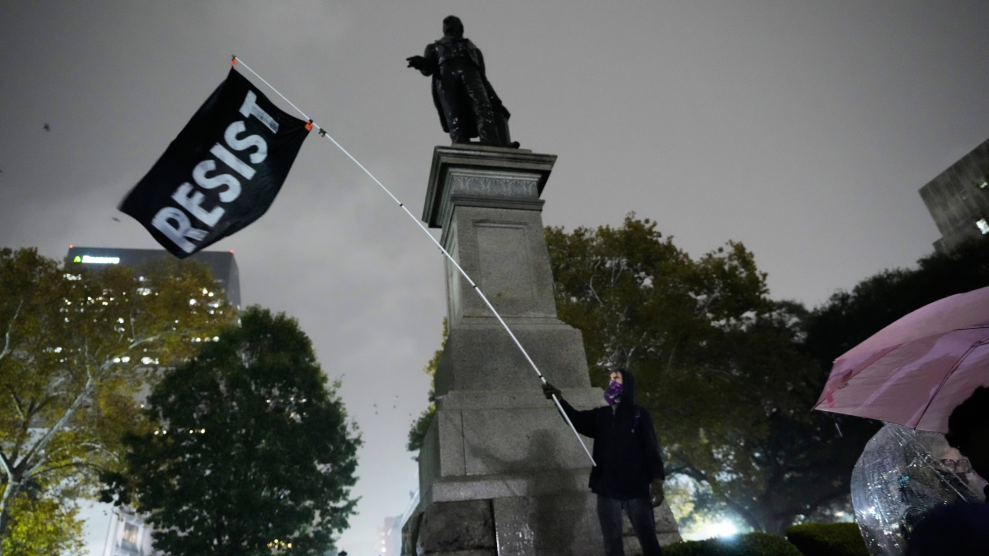This story is a collaboration with the Economic Hardship Reporting Project and Magnum Foundation. We asked photographers to show us the paradox of today’s labor movement. Even as the popularity of unions has grown over the last decade, actual membership has continued to decline. Can new enthusiasm revitalize American labor? Read about this unique moment for workers here.

Last year, under the leadership of Shawn Fain, the United Auto Workers conducted a historic 46-day strike against the so-called Big Three automakers. The action gained national attention and harkened back to the union’s militant roots. (The UAW’s “Stand Up Strike” was a reference to the famous 1936 sit-down strike in Flint, Michigan.)
More than just a battle over an individual contract, Fain publicized the UAW’s work as a battle for working people across the country. He became a notable figure as few labor leaders have been in recent decades. The battle saw the strike as a mobilizing force for the entire working class. Fain wore a shirt that said “eat the rich” and he lambasted the “billionaire class.” Politicians took note and saw the UAW strike as an essential part of defending their bona fides.
In the process, the UAW and Fain showed those in unions fighting for their rights from a position of strength. When the new contract was won, Fain promised in his post-victory speech that it was no less than “a turning point in the class war.”
Sylvia Jarrus’ photos take us to the front lines to show the impacts of one of the most consequential labor fights of the 21st century. For all the attention thrust on Fain—a necessity, he believed, to win the fight—this was a movement that involved hundreds of workers who walked out. “If it weren’t for us,” Denita Shaw-Lynch of Local 862 said, “none of these cars would be built.”
Editor’s note: Mother Jones workers are represented by UAW Local 2103.
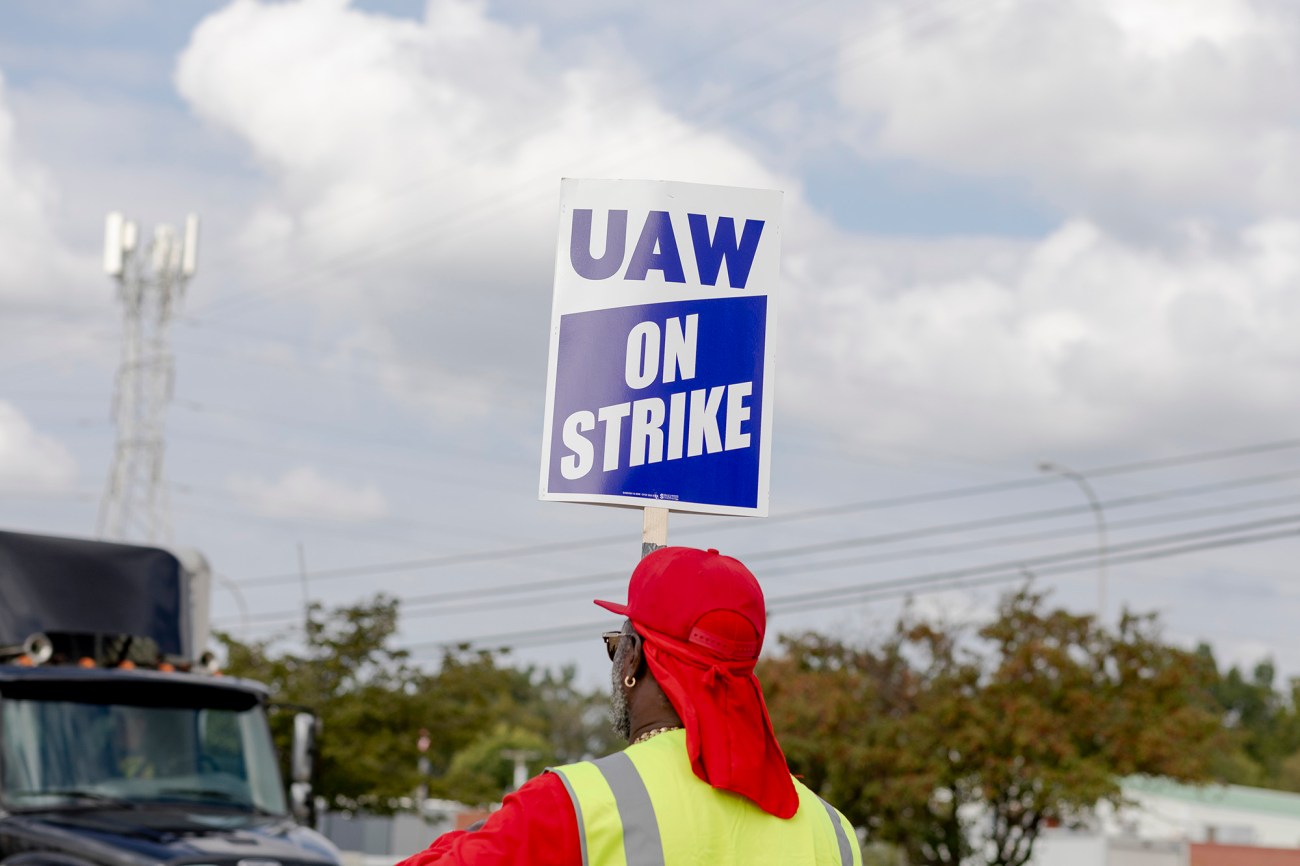
UAW members on the picket line outside of the Ford Michigan Assembly Plant in Wayne, Michigan. Thousand of UAW workers went on strike at General Motors, Stellantis, and Ford Motor after the union and the automakers failed to reach a deal on a new labor contract. The contract was eventually ratified in November.
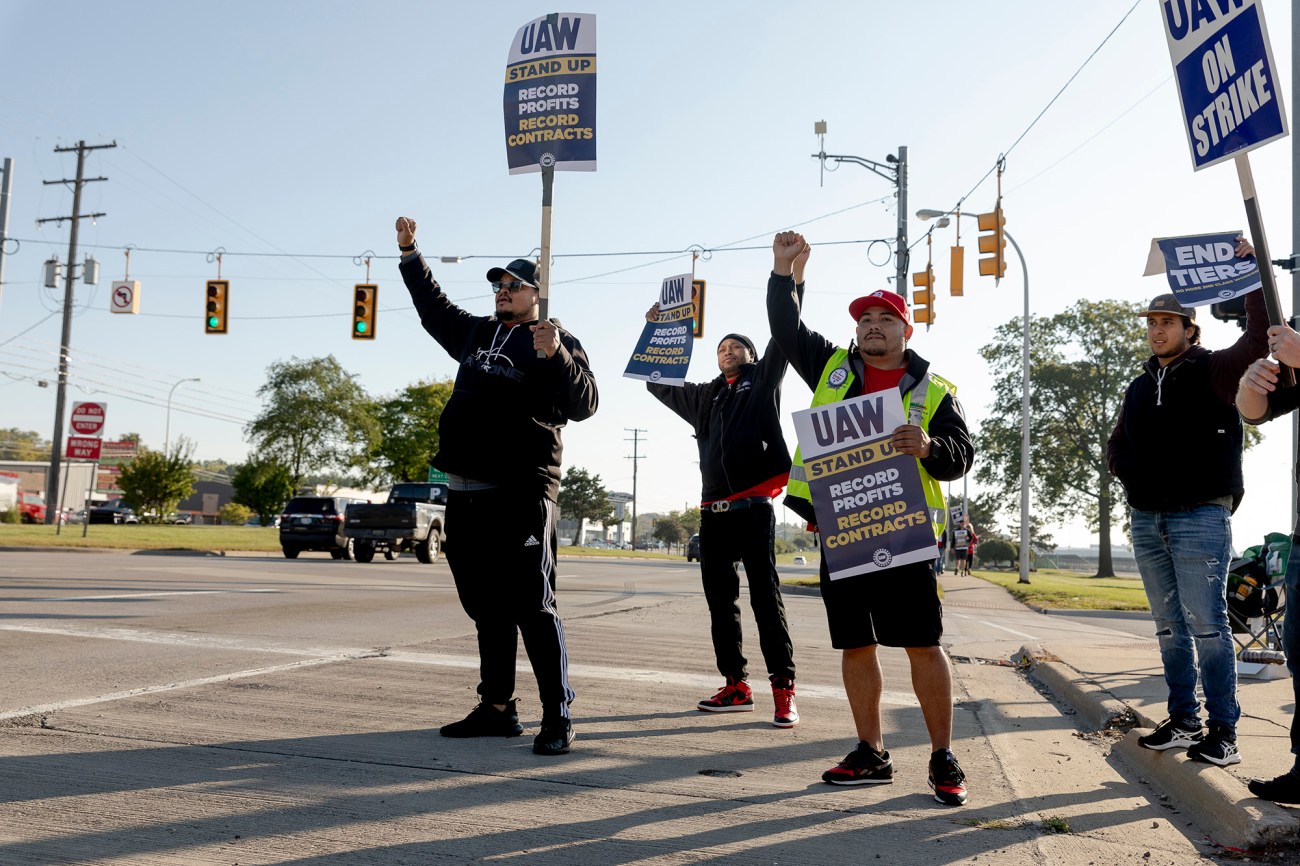
UAW members, including Brandon Bell, left, picket outside of the Ford Michigan Assembly Plant in Wayne, Michigan.
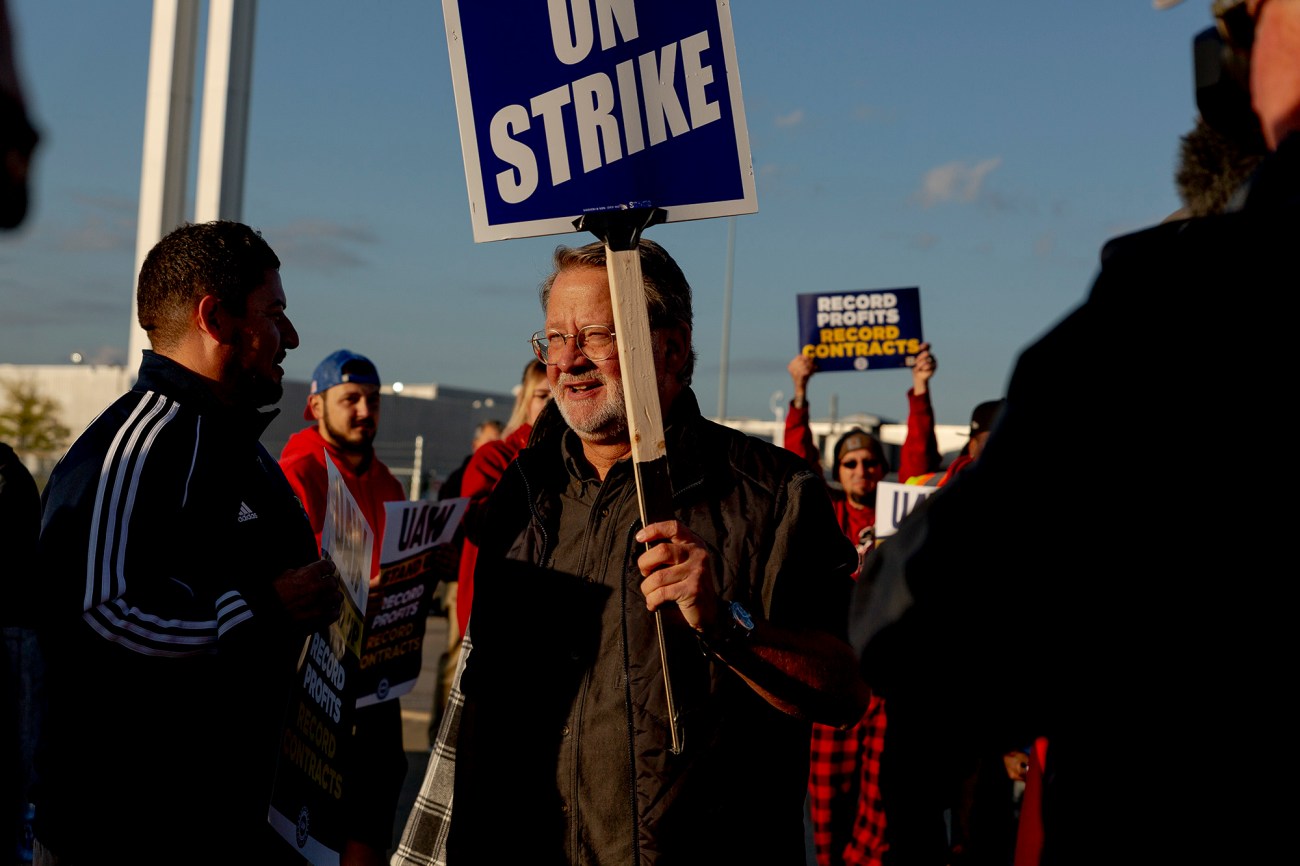
Michigan Sen. Gary Peters joined UAW members at the picket line outside of the Ford Michigan Assembly Plant.
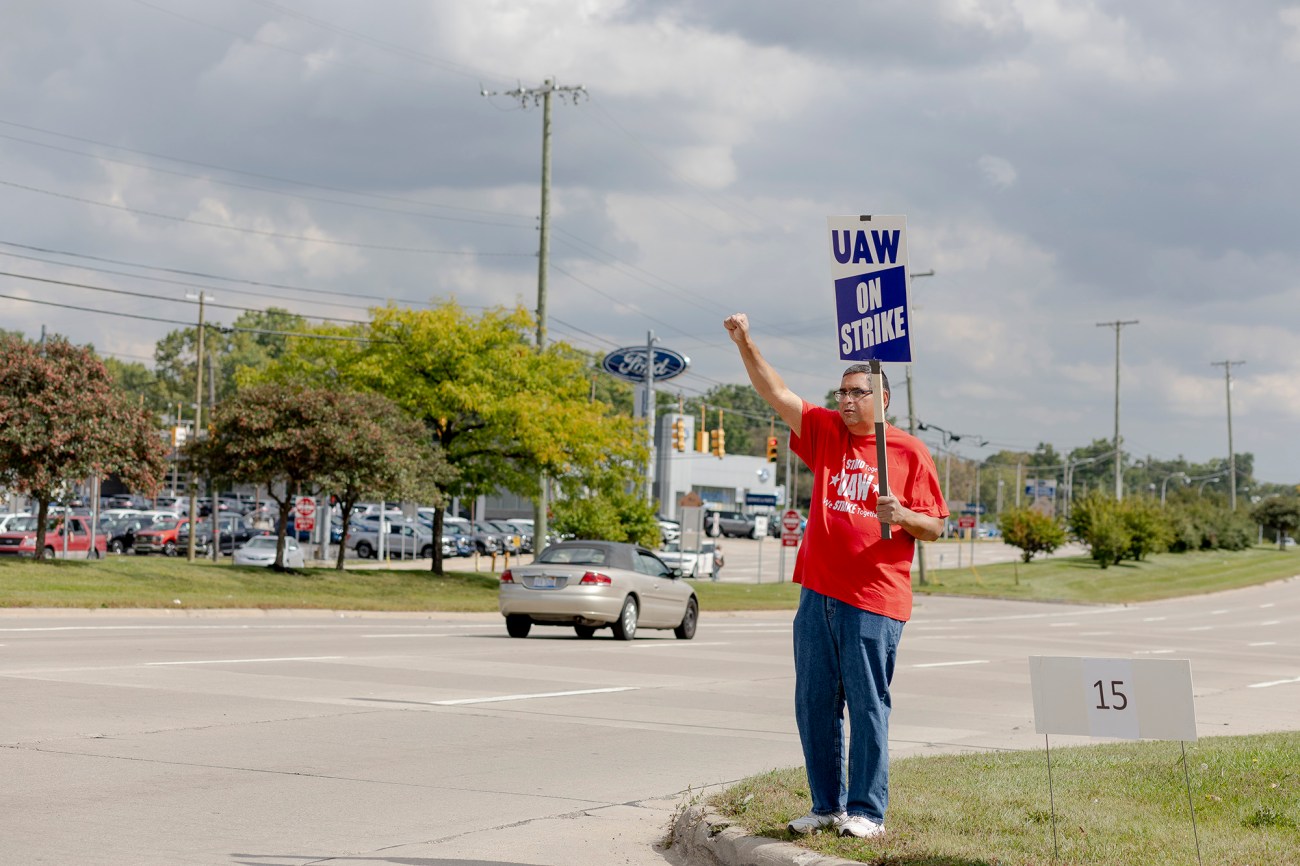
Mohamed Mockbil, 60, on the picket line outside of the Ford Michigan Assembly Plant. “I’m feeling good,” Mockbil, who has worked at Ford for 11 years, said. “ I think the union’s going to get their point across and it will be resolved soon.”
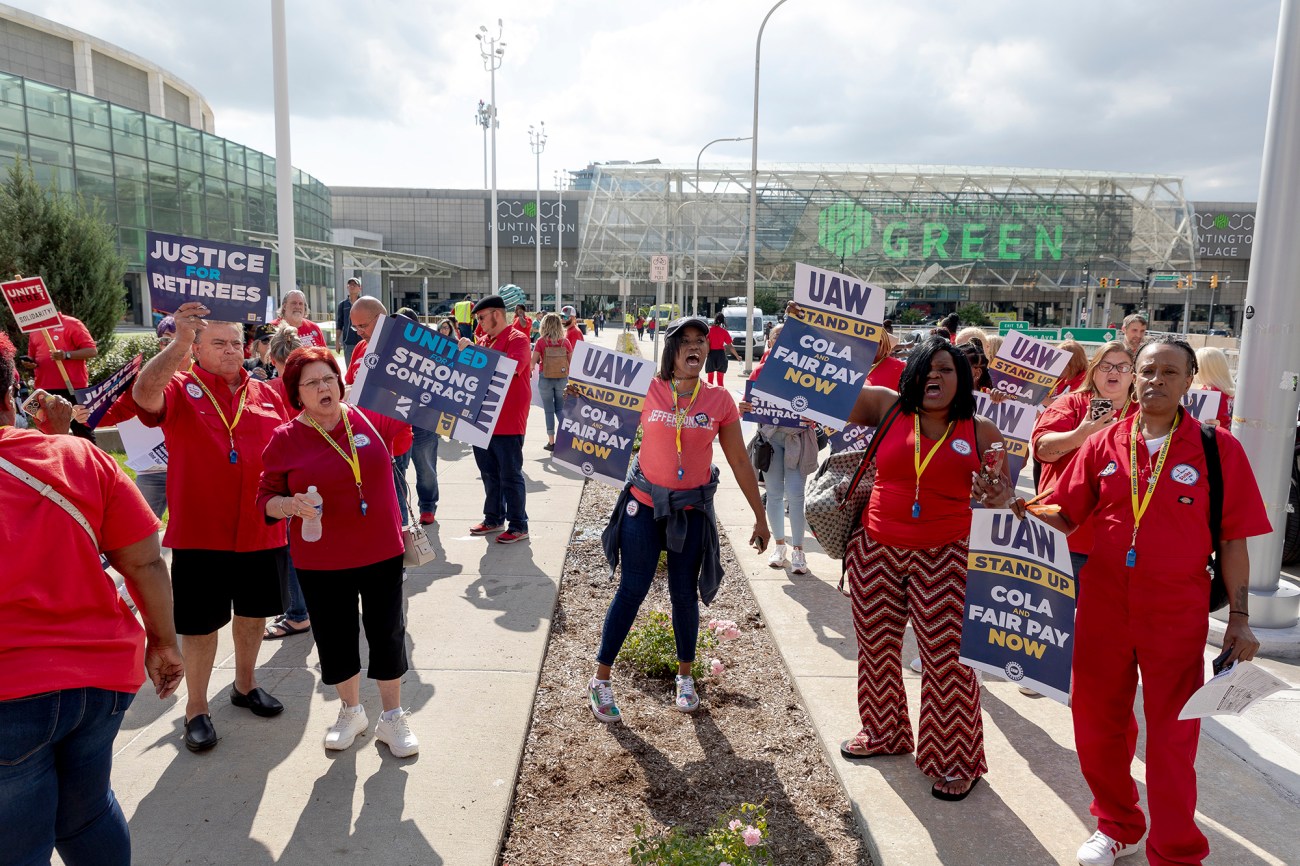
UAW members and supporters participate in a rally at the UAW-Ford Joint Trusts Center on September 15, 2023 in Detroit.
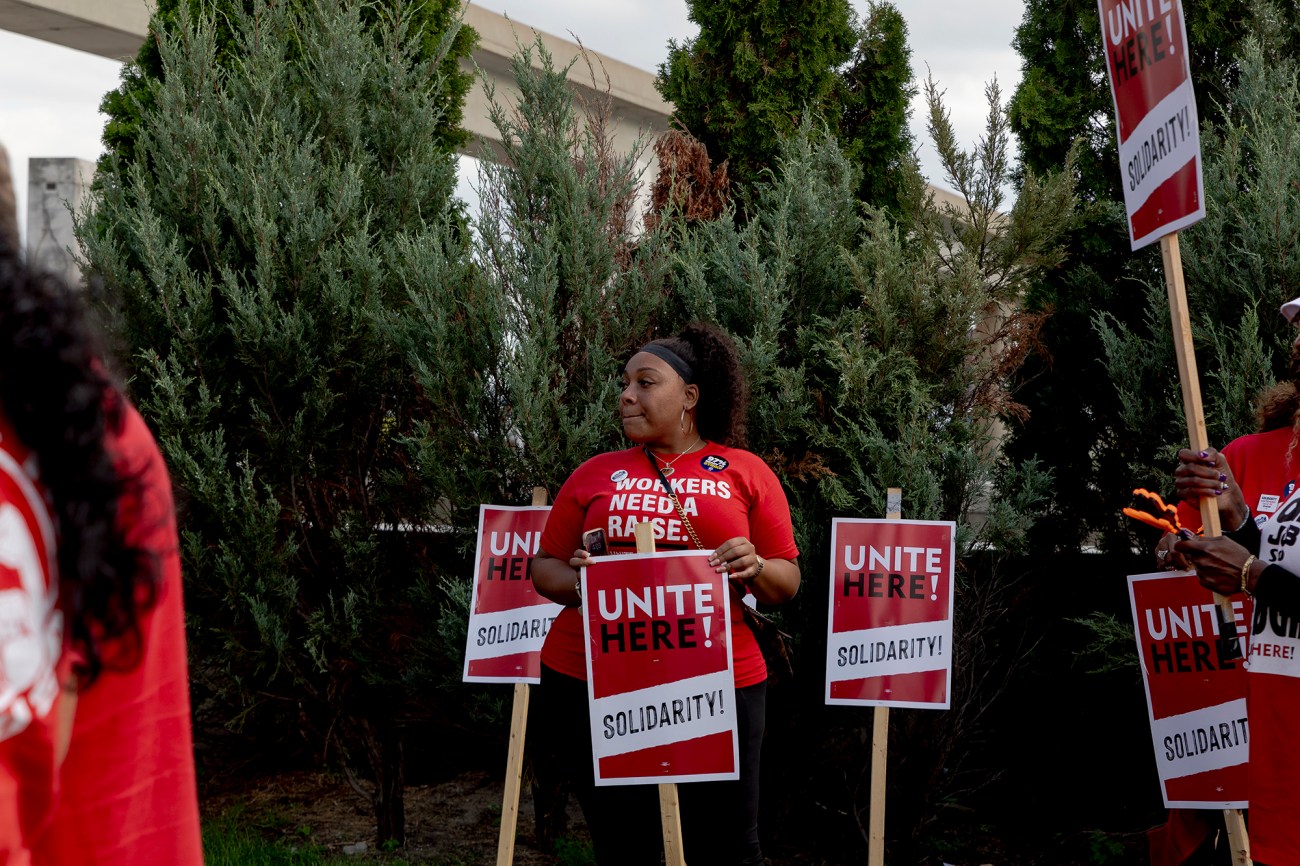
Sheila King of Unite Here joined UAW members at the rally at the UAW-Ford Joint Trusts Center.
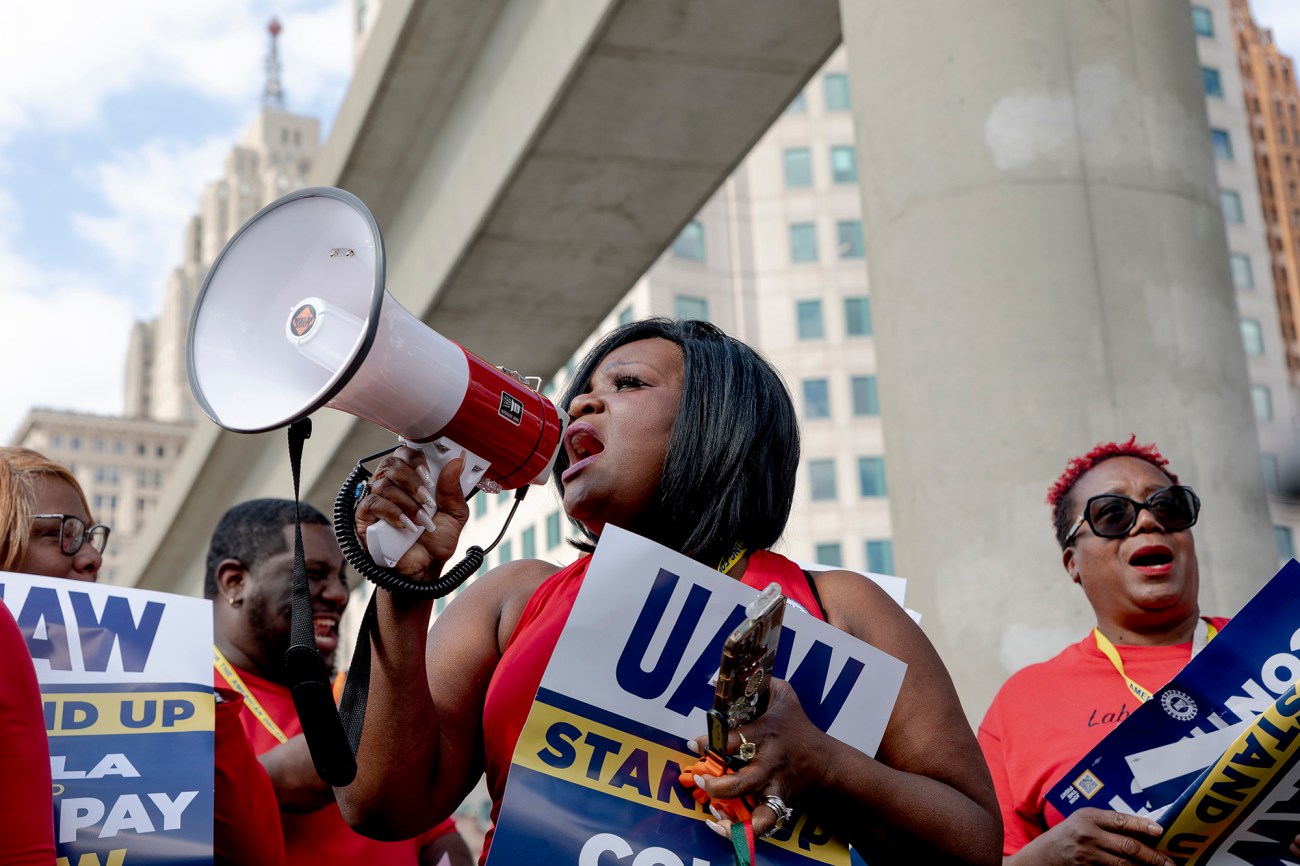
Denita Shaw-Lynch, 50, of Local 862 participates in a rally at the UAW-Ford Joint Trusts center. “If it weren’t for us, none of these cars would be built,” she said.
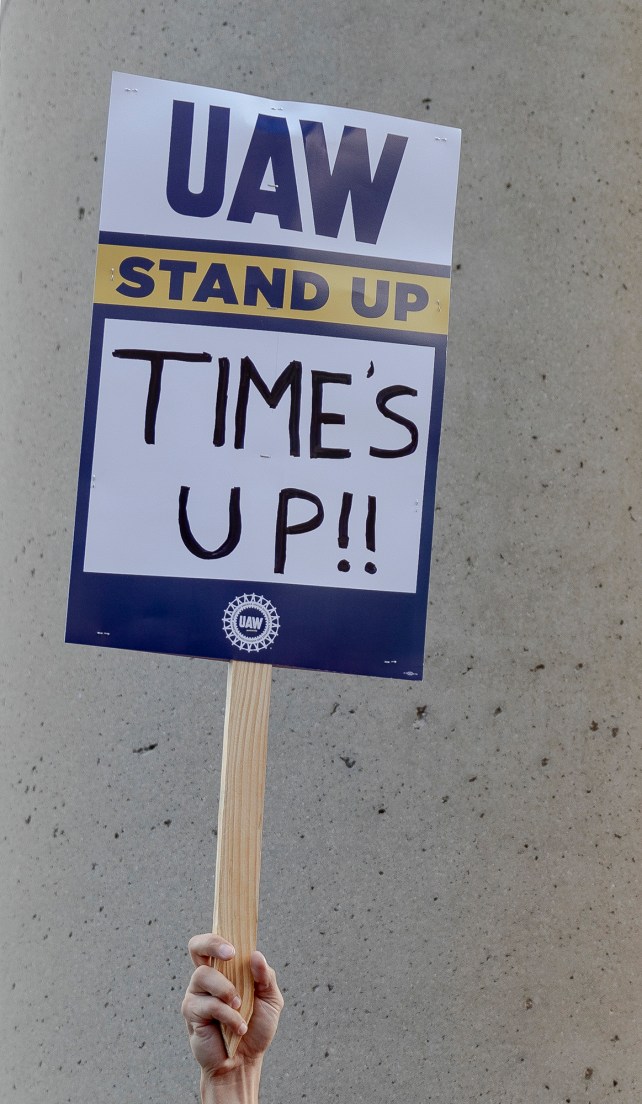
Fain and UAW leaders called the 2023 action “The Stand Up Strike,” harkening back to the 1936 sit-down strike at a General Motors plant in Flint, Michigan, that helped create the modern labor movement.
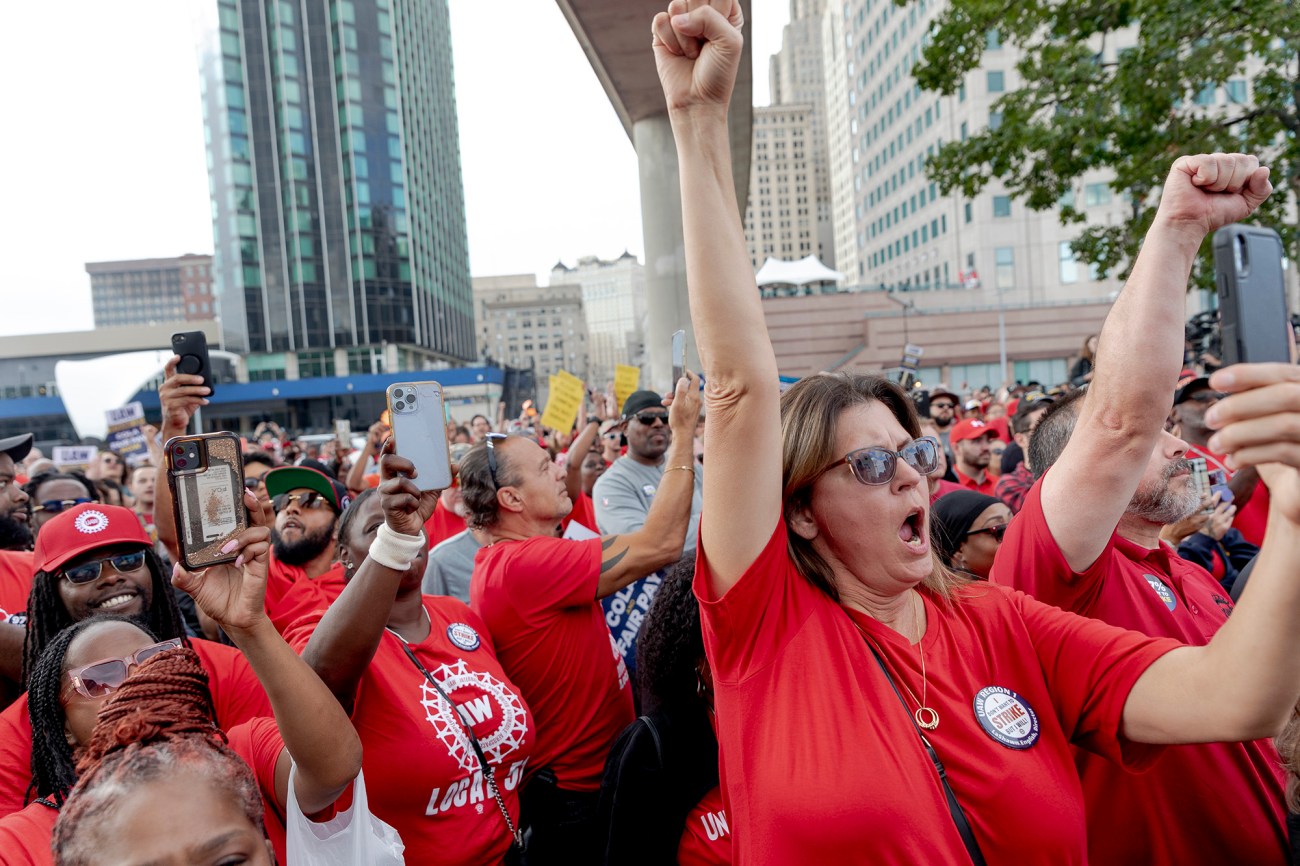
Fain, unlike previous leaders, used social media in his campaign to push the strike.
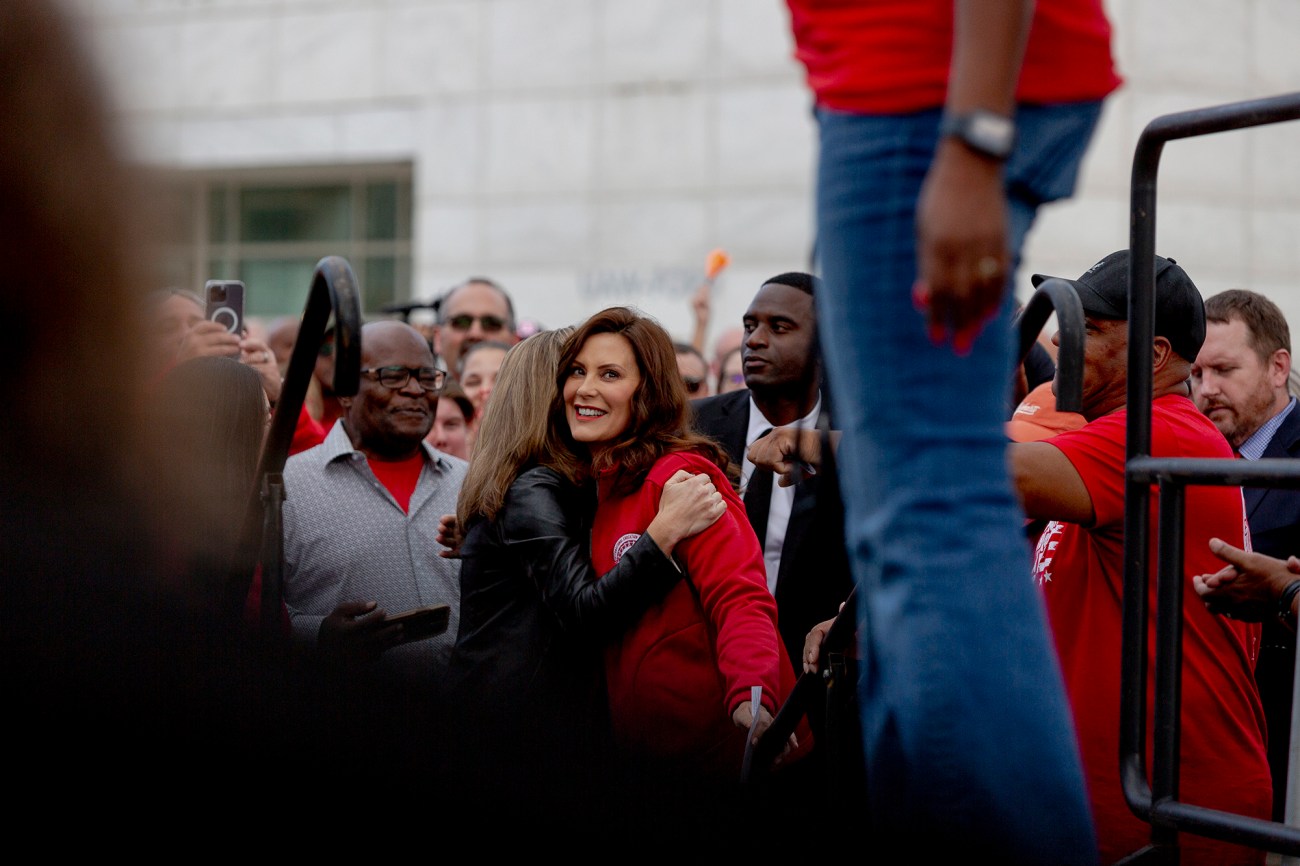
In 2023, Democratic politicians supported the UAW. Michigan Gov. Gretchen Whitmer and Secretary of State Jocelyn Benson both attended rallies. President Joe Biden made history as the first sitting president to join strikers.
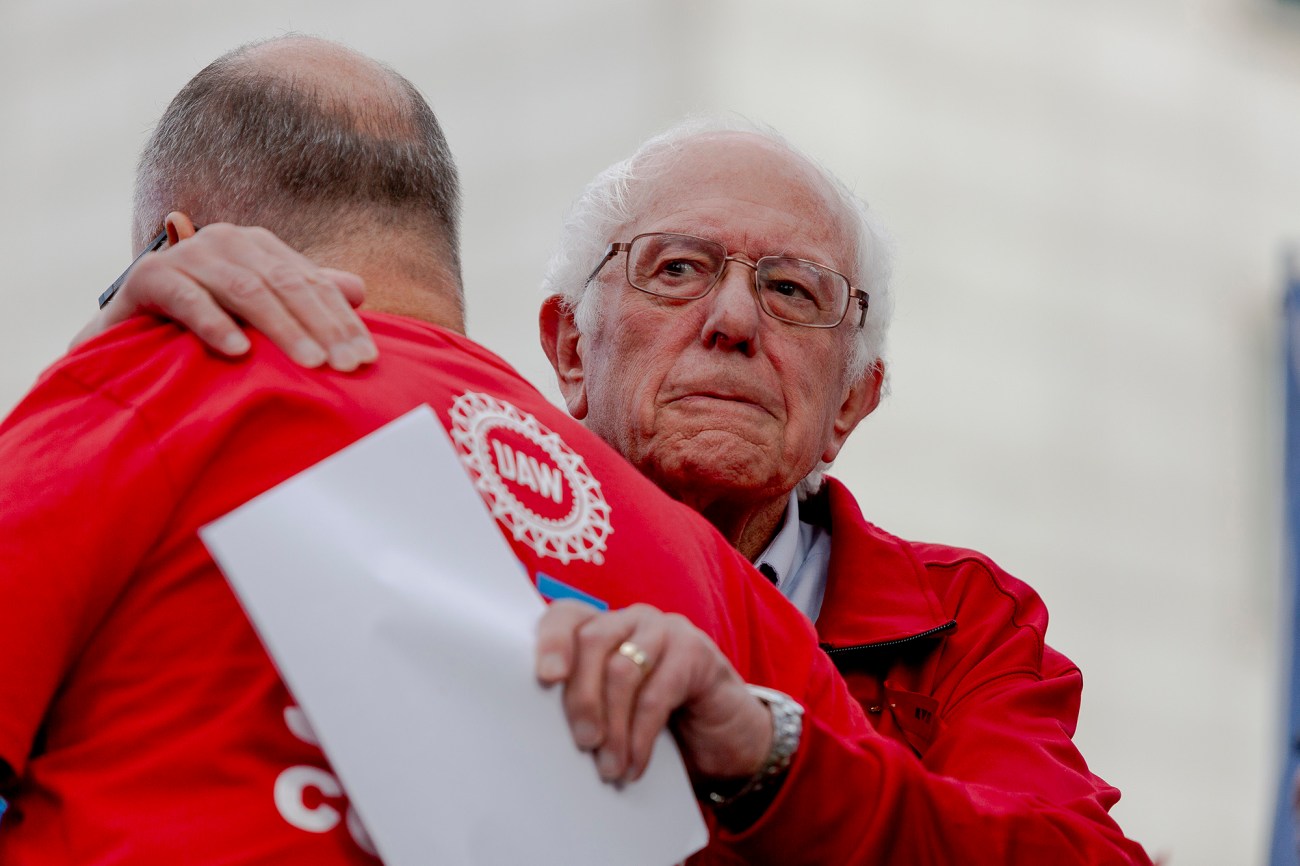
Sen. Bernie Sanders, a long advocate for labor, was at the front lines. He spoke at a rally, hugging UAW President Shawn Fain beforehand.
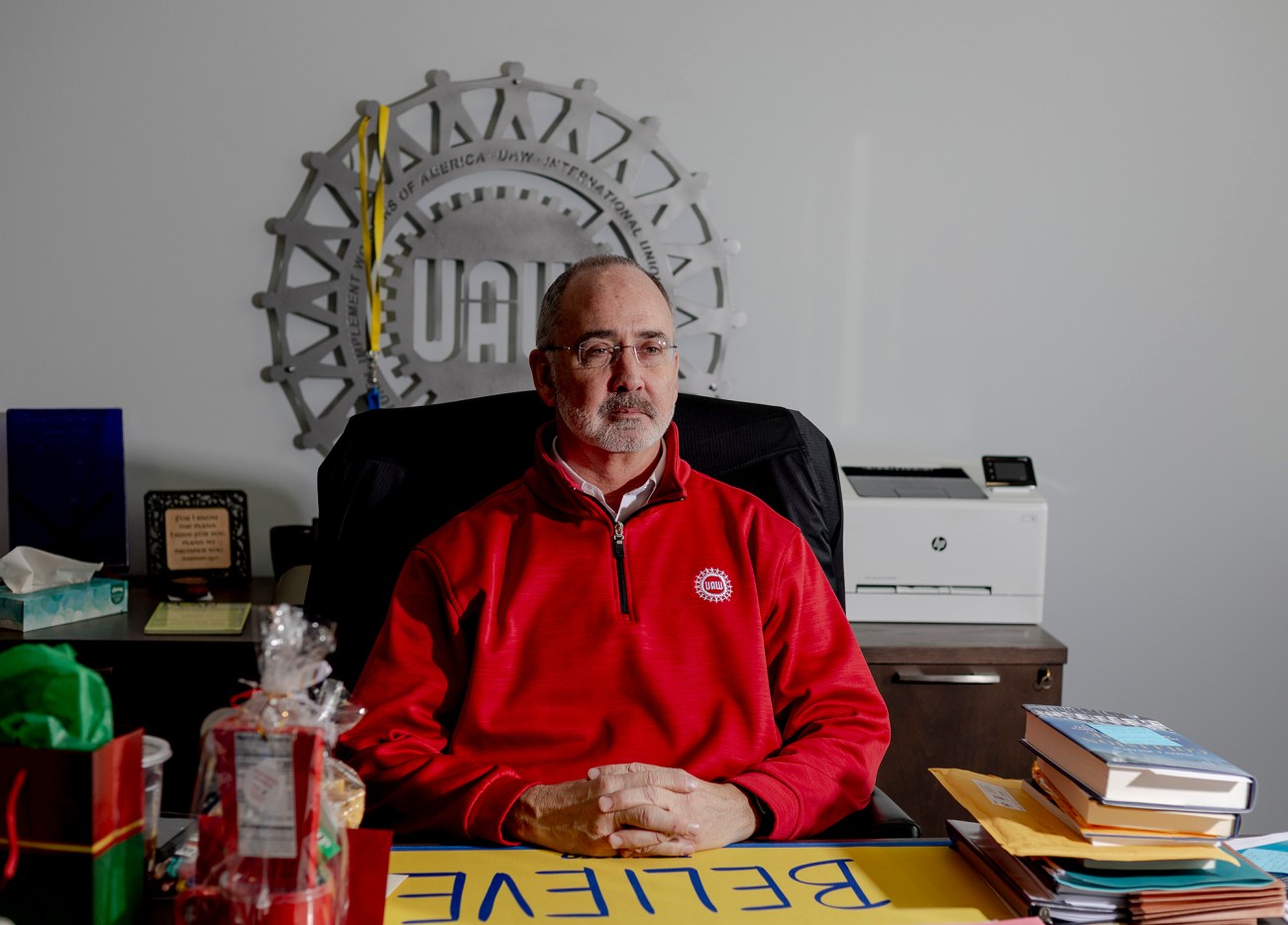
UAW President Shawn Fain at his office in Detroit, Michigan.
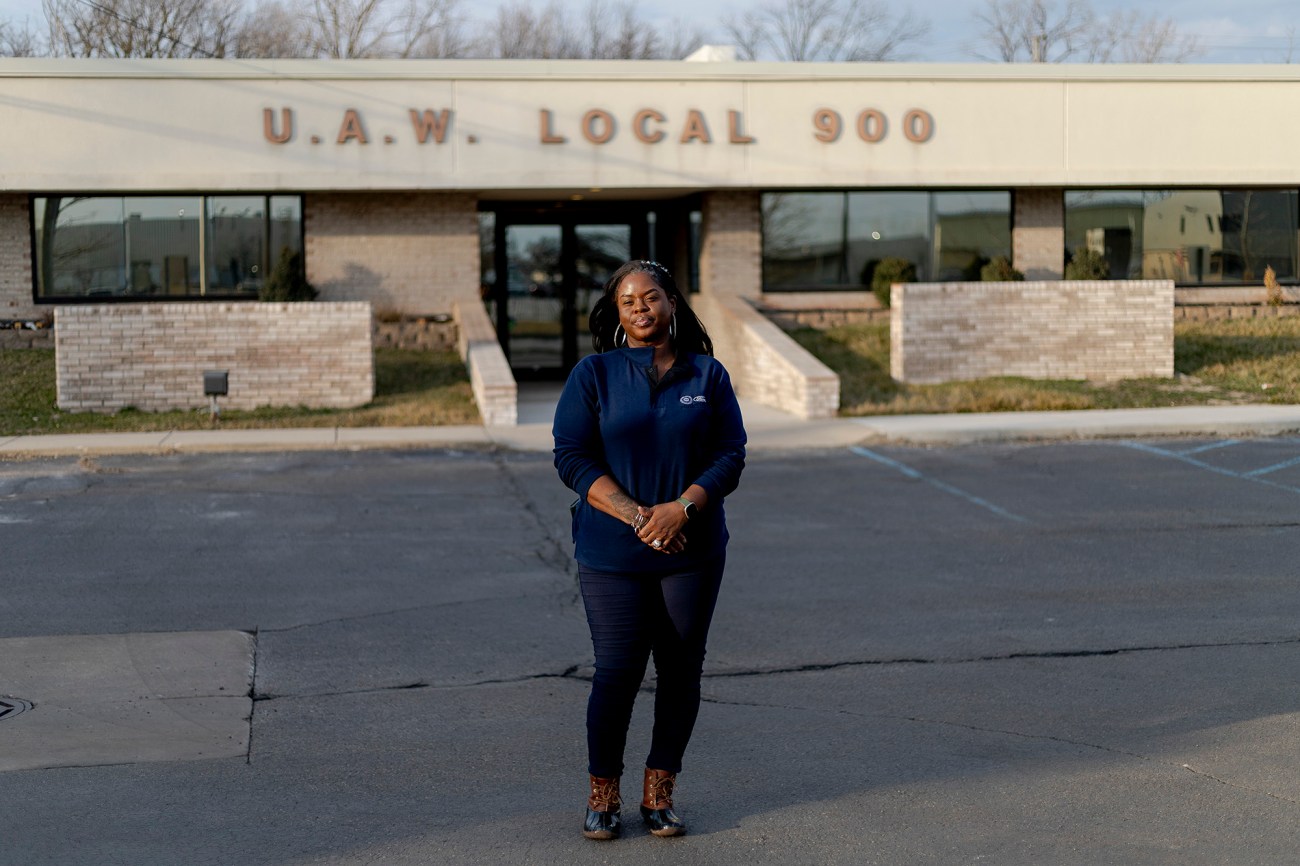
Ebony Kennedy, 48, at the UAW Local 900 building. A Ford employee for 25 years, Kennedy currently works in the Michigan Assembly Plant’s quality department. She served as the community service chair and operated the UAW pantry, which provided essentials like food, hygiene products, and baby supplies, during the strike. “The challenge for myself was not seeing my family,” Kennedy said. “You have to go into a mode where you get complete tunnel vision, where you’re just here, you’re in strict work mode, and you gotta cut everything out on the outside.”
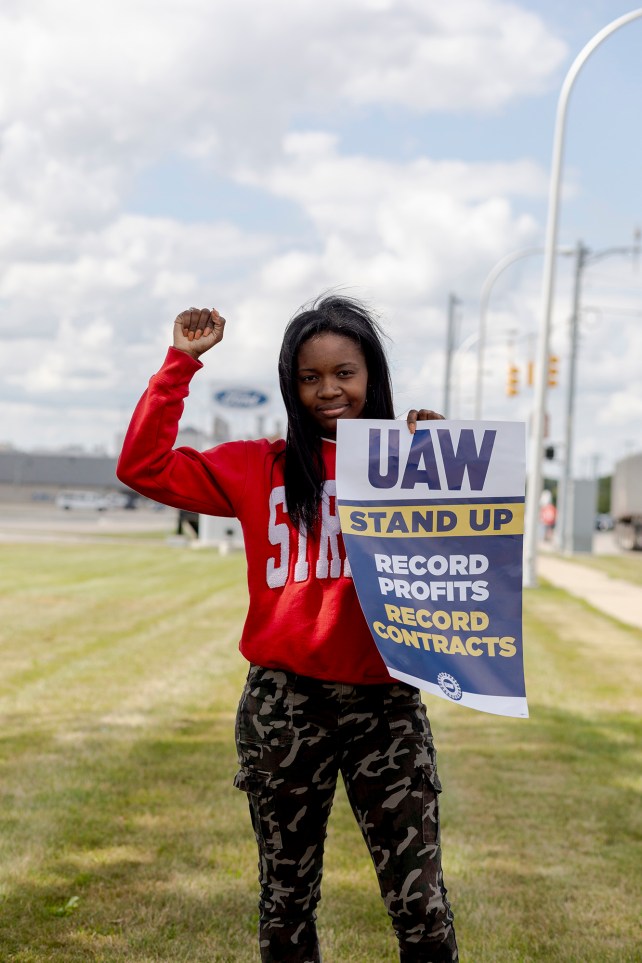
Ceandra Moing, 26, on the picket line.
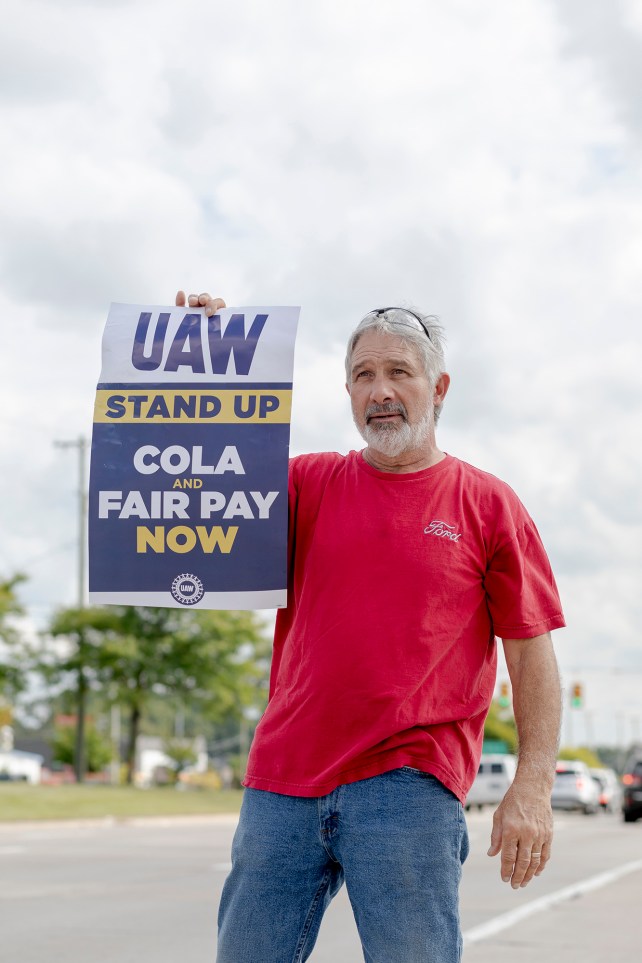
“They never should’ve started the tiers,” Bob Kvasnovsky, 62, said of the system, implemented during the Great Recession to save money, in which people hired after 2007 were paid less. “People are doing the same work, but we’re getting half the pay.”
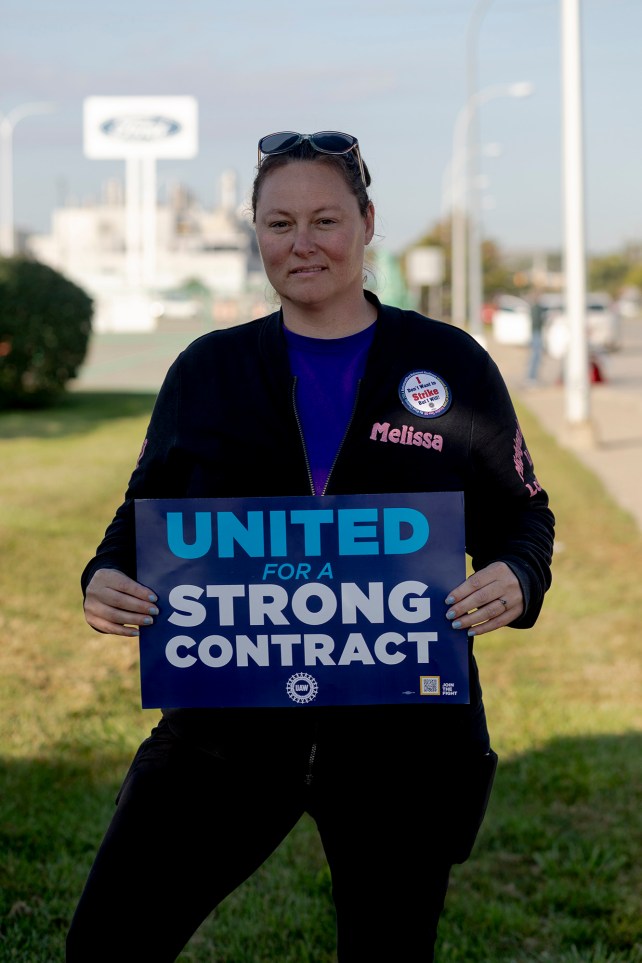
“I can’t do my job without them,” Melissa Lucas, 38, said, “they can’t do their job without me and we’re a team so I’ll be out here for as long as it takes.”
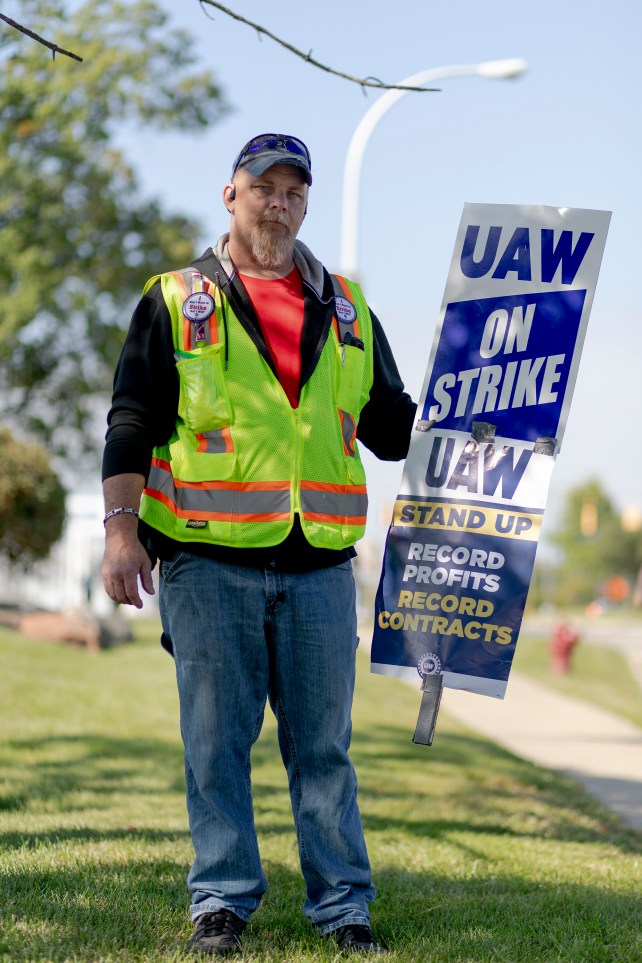
Rob Murphy, 53, stands with his sign on the picket line.
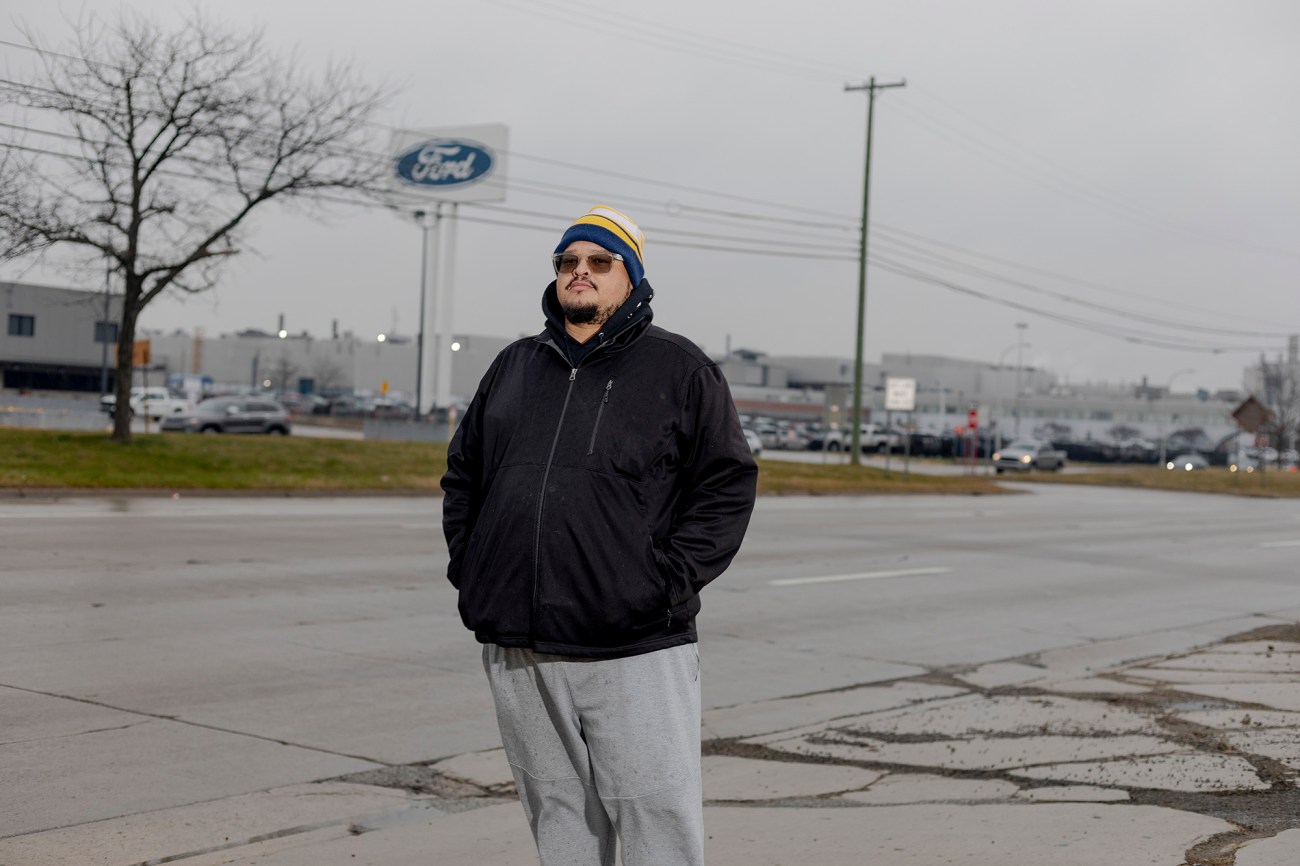
Brandon Bell, 39, outside of the Ford Michigan Assembly Plant where he’s worked for three years in Wayne, Michigan.
